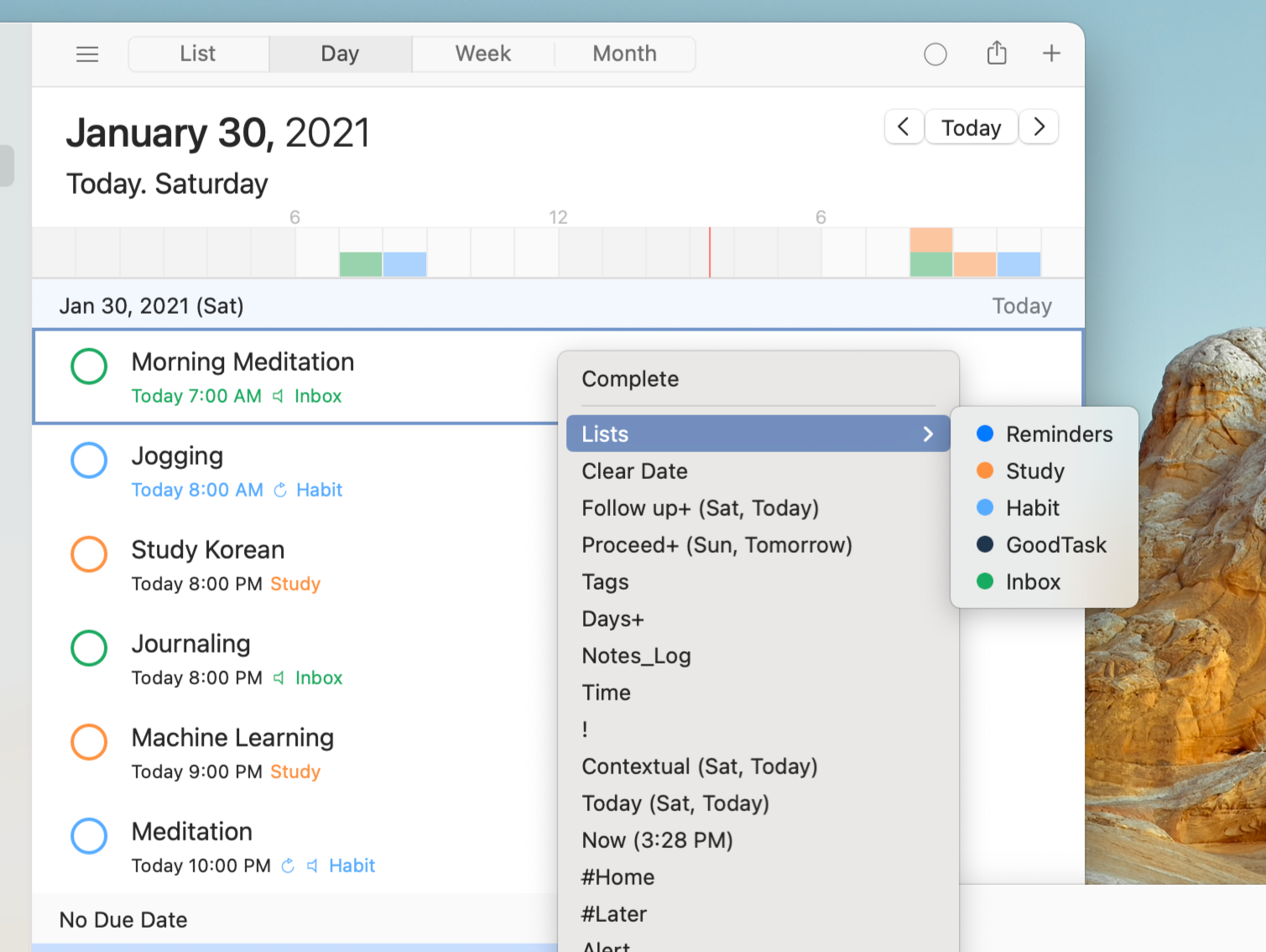

We can also see that there is a positive skew with most of the completion rates coming above 50%. When you look at the distribution of task-completion rates in the figure above, you can see there is a spread with a few noticeable spikes at 100%, 90%, 50% and 0%. I’ve graphed the distribution of task-completion rates in a histogram below.įigure 1: Distribution of 1189 tasks at various completion rates.
GOODTASK HOW TO
I used this data extensively in the popular report “ How to Conduct a Quantitative Usability Test.” The data comes from 115 usability tests from 3472 users across over a dozen organizations. In total I have data from 1189 tasks taken from both lab-based (90%) and unmoderated usability tests (10%).
GOODTASK SOFTWARE
I’ve been collecting task-completion rate data for several years-from business software, consumer software and websites. But what do you set as your goal?Įven though context matters, it can help to have an idea about how well your task completion rate stacks up against others taken during a usability test. You can use this graphical calculator to see how what the minimum sample size is to have the lower end of the confidence interval exceed your goal. For example, if 10 out of 10 users complete a task, you can be 95% confident between 75% and 100% of all users will be able to complete it.īecause the lower boundary of the confidence interval exceeds 70%, you can be at least 95% confident 70% or more users will be able to complete the task. You need to generate confidence intervals around your completion rate to see the likely range of the population completion rate. Of course, just because 70% of your sample completes the task doesn’t mean the entire user population will. That is, a task is considered good enough for now if there is evidence from testing that at least 70% completed the task on their first attempt. I’ve often seen walk-up-and-use consumer web-applications with a 70% completion rate target. If the consequences are less impactful, then you can relax the rate a bit. If the costs for task failure are high (loss of money, loss of life) then you need to aim for 100%. What exactly is a good task completion rate? Context Matters 90 or 90% when expressed as a percentage. For example, if 9 out of 10 users complete a task, the completion rate is. If they complete the task successfully you give them a 1 and if they fail it you given them a 0.Īfter testing all your users, the average of all those 1’s and 0’s gets you the task completion rate. You define a scenario with clear success criteria and have the users attempt it on an application. The Fundamental Usability MetricĪ binary task completion rate is one of the most fundamental of usability metrics. Context matters in deciding what a good completion rate is for a task, however, knowing what other task completion rates are can be a good guide for setting goals.Īn analysis of almost 1200 usability tasks shows that the average task-completion rate is 78%.


 0 kommentar(er)
0 kommentar(er)
